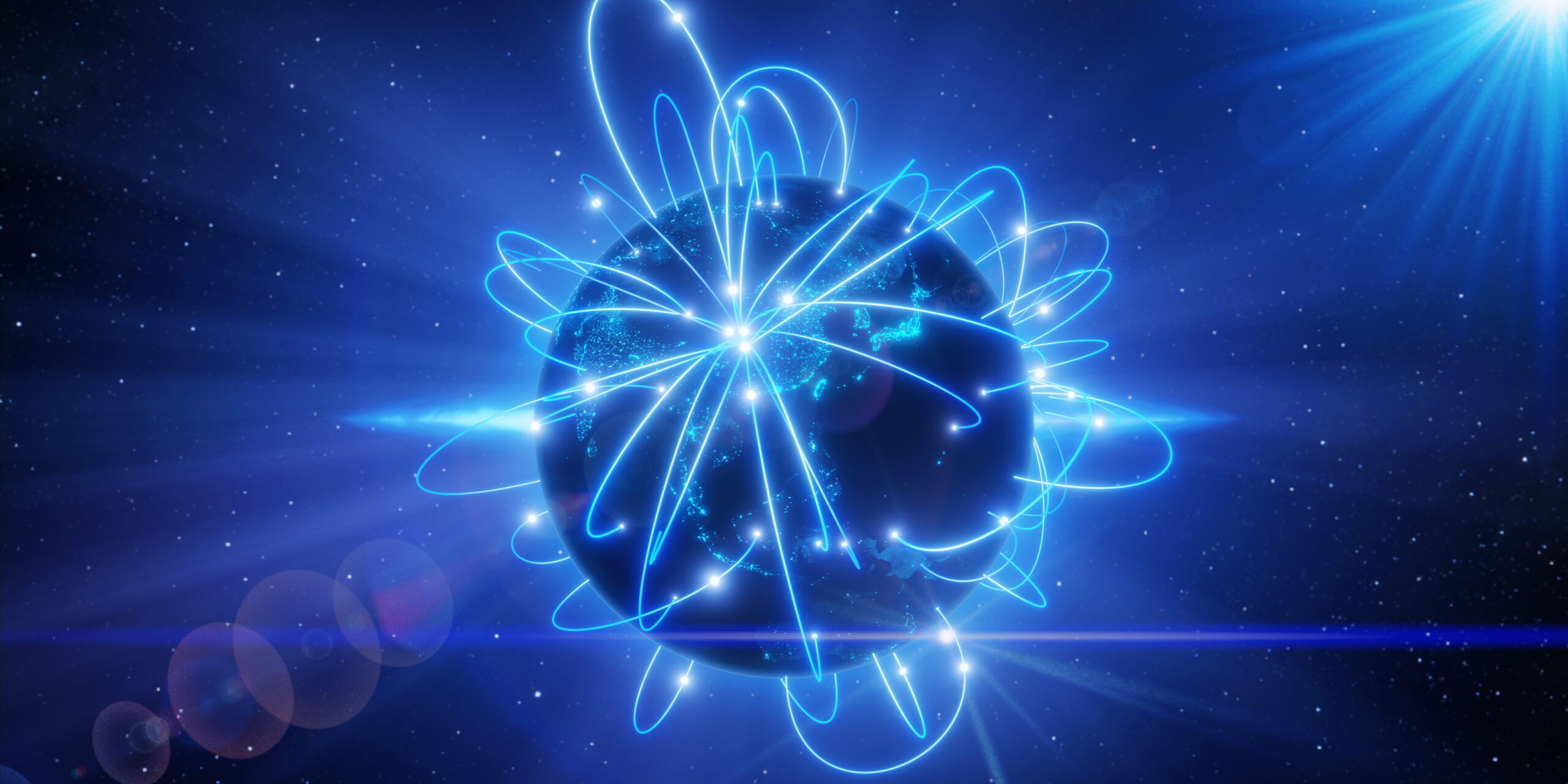AI speeds up detection of neutron star mergers
By Isabelle Dumé
Introduction
A new artificial intelligence/machine learning method rapidly and accurately characterises binary neutron star (BNS) mergers by analysing their gravitational wave signatures. While the method has not yet been tested on new mergers in real-time, this approach could support astronomers to quickly estimate key properties—such as merger locations and neutron star masses. This enables telescopes to easily capture accompanying electromagnetic signals.
When massive objects like black holes and neutron stars collide, they emit ripples in spacetime called gravitational waves (GWs). Since 2015, scientists have monitored these ripples using kilometre-scale interferometers. They are the Laser Interferometer GW Observatory (LIGO), the Virgo GW Interferometer (Virgo) and the Kamioka GW Detector (KAGRA) — collectively known as the LVK observatories.
When two neutron stars in a binary pair merge, they emit both electromagnetic waves as well as GWs. As both waves travel at the speed of light, the uncertain surrounding processes cause the electromagnetic signal to be slightly delayed. This indicates that the LVK observations can detect the GW signal coming from a binary neutron star (BNS) merger seconds or minutes earlier. The ability to identify GWs accurately boosts the chances of catching other signals from the same event.
However, GW signals are lengthy and complex, and current approaches like Bayesian inference tend to be slow. Although there are faster alternatives, they often rely on algorithmic approximations that compromise accuracy.
Trained with Millions of GW Simulations
A team of physicists led by Maximilian Dax from the Max Planck Institute for Intelligent Systems in Tübingen, Germany have developed a machine learning (ML) framework that can instantly analyse GWs from BNS mergers. Unlike traditional methods, their deep neural network model is trained on millions of GW simulations — delivering precise estimates of masses, locations and spins based on its training dataset within a second of detection, without approximations.
A key feature of the model includes a sky map, pinpointing the BNS mergers’ location with high accuracy. The team previously applied ML to analyse GWs from binary black hole (BBH) mergers, but BNS mergers demand faster analysis due to their potential electromagnetic counterparts — something BBH mergers lack.
The researchers, who report their findings in Nature, hope their method will transform astronomical observations by allowing earlier and more frequent detection of these cosmic events — offering new insights into the processes driving them.
“It could also serve as a blueprint for dealing with the increased GW signal duration that we will encounter in the next generation of GW detectors,” Dax says. “This could help address a critical challenge in future GW data analysis.”
As of now, the team has focused on data from current GW detectors such as LIGO and Virgo, but they plan to apply their approach more extensively to upcoming GW detectors.


